Warrior Publications has posted a story about the on-going Mi’kmaq resistance to exploration for fracking sites.
Burning tires, they argue, is a tried-and-true tactic for effective street protest and popular resistance. The pollution from the tires? A necessary evil and less than would be produced by fracking.
Here’s the full story, with brilliant photos:
On Burning Tires and the Mi’kmaq Anti-Fracking Resistance
Women warriors at a tire fire blockade on Hwy 11, Dec 2, 2013.
by Zig Zag, Warrior Publications, Dec 4, 2013
After three women were injured by an SWN vehicle on Monday Dec 2, and 11 people arrested by the RCMP, Mi’kmaq warriors established several burning tire blockades on Highway 11. The fires burned into the night and served to delay SWN vehicles from proceeding with their exploratory testing. Because it has been an effective tactic, another burning tire blockade has been established today.
Establishing another tire fire blockade on Dec 4, 2013.
Many people are commenting on social media about the toxic effects of burning tires, and portraying this action as hypocritical for land defenders to engage in. The vast majority of these people, of course, are not present at the blockades but sitting comfortably at their computer keyboards. I doubt most have ever been in a serious confrontation with riot police or faced daily assaults as the Mi’kmaq have.
Piqueteros in Argentina establishing a fire tire blockade, 2000.
Tire fires are commonly used by resistance movements because they are effective in shutting down transportation routes, such as roads and highways. The piqueteros in Argentina, for example, used tire fire blockades extensively in the late 1990′s and early 2000′s. They would arrive at major highways, roads or streets, place tires in the street and set them on fire. They would remain until police mobilized a large enough force that threatened the blockade and then disperse. Through coordinated actions they were able to paralyze much of the transportation infrastructure during major mobilizations.
If you think the Mi’kmaq tire fires are bad, check out this massive one set by Red Shirts in the downtown financial district of Bangkok, Thailand, 2010.
The main complaint being expressed by detractors of this tactic is that it is bad for the environment. Some are clearly attempting to undermine the Mi’kmaq resistance by portraying this as a hypocritical act: fighting toxic pollution by lighting toxic fires. But the effects of tire fires, while producing toxic fumes, is minor compared to the devastation that fracking would cause to land and water.
Tire fire blockade at Six Nations, April 2006.
The idea being expressed, that the warriors don’t care about the environment, is laughable. They have been fighting for months against SWN’s exploratory testing, enduring police assaults and arrests, pepper spray, and bean bag rounds. They are doing this to defend their land and water.
Mi’kmaq warriors on Hwy 11, Dec 4, 2013.
There are many more serious causes of toxic pollution than a few dozen tires set on fire on a rural highway. The daily commute of vehicles along highways, roads and city streets alone causes far more pollution than the Mi’kmaq tire fire blockades. So too do many industrial practises, such as factories producing a wide variety of products from toilet paper to the Tar Sands in northern Alberta. Before people start complaining and second-guessing the Mi’kmaq’s tactics, they should go out and stop some of these vastly more environmentally destructive practises.
Update: Shale gas protest closes Highway 11 again
Protesters burning tires, RCMP rerouting traffic
CBC News, Dec 04, 2013
Anti-shale gas protesters have blocked Highway 11 near Rexton again, say RCMP.
Burning tires and pallets are stretched across the highway.
RCMP have closed the highway between exits 57 and 64. Traffic is being rerouted and motorists are being advised to expect delays.
Police also arrested one protester for mischief earlier in the day. They say the man was in the middle of the road, impeding traffic.
On Monday, about 100 protesters blocked the highway for several hours with a tire fire after a judge agreed to extend SWN Resources Canada’s injunction to keep protesters from interfering with the company’s exploration work in the area.
Under the terms of the injunction, protesters must stay 20 metres away from the side of roads where the company is working and 250 metres away from the front or back of its trucks.
SWN Resources now has until Dec. 17 to complete its seismic mapping of the area.
http://www.cbc.ca/news/canada/new-brunswick/shale-gas-protest-closes-highway-11-again-1.2451099


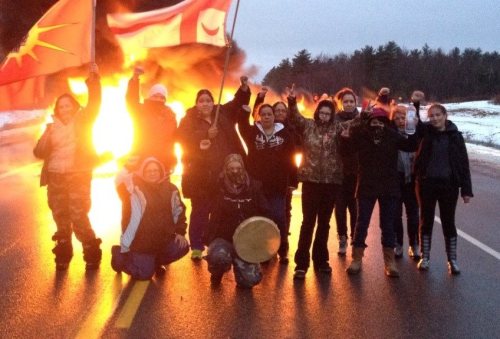
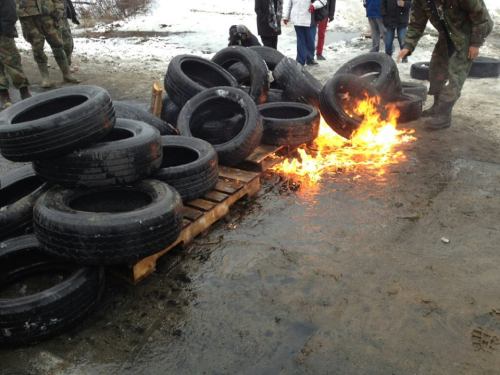
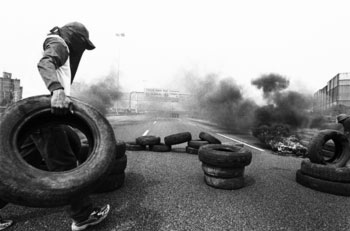
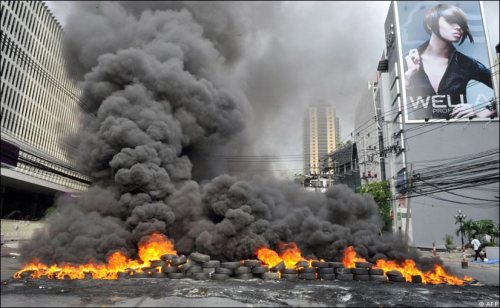
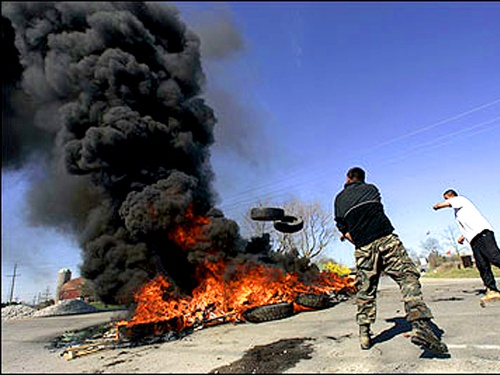
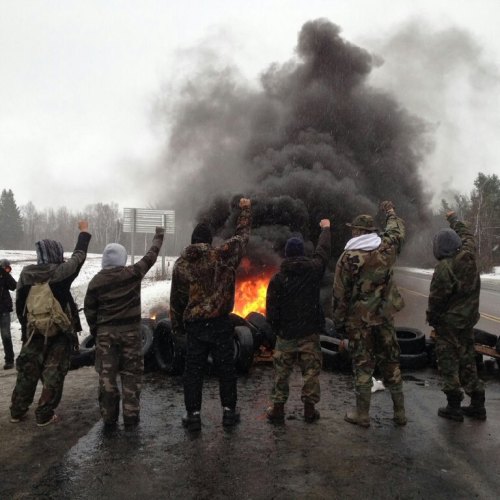
Leave a Reply
You must be logged in to post a comment.